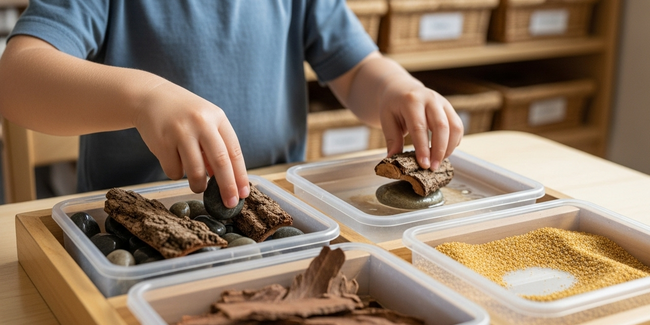Are you wondering if the messy, hands-on activities your preschooler loves—the sand between their fingers, the squish of playdough, the splash of water—are actually preparing them for school? In a world focused on early literacy and numeracy, it’s a question many discerning parents ask. You see the joy, but you want to be sure you’re also seeing real, foundational learning.
As a team with over 15 years of experience in managing high-quality early learning environments, we can provide this assurance: sensory play is not just a precursor to learning; it is the learning. It’s one of the most critical foundations for academic success, emotional regulation, and lifelong curiosity.
This guide reveals the powerful science behind sensory play. We will go beyond simple activity lists to explore the deep developmental ‘why’. We will show you how these rich, tactile experiences build a more capable, resilient, and school-ready child, and how this understanding is central to the philosophy of any high-quality, play-based centre.
The ‘Why’: Weaving the Brain’s Foundational Tapestry
Before a child can learn to hold a pencil, recognise letters, or manage playground friendships, their brain must first learn to make sense of the world. Sensory play is the engine of this process. Every time your child touches a rough piece of bark, smells a fragrant flower, or feels the pull of gravity on a swing, they are sending a flood of information to their brain.
This information doesn’t just disappear. It forges and strengthens neural pathways, creating a complex and efficient communication network. Think of it less like stacking building blocks and more like weaving an intricate neurological tapestry. Each sensory thread—touch, sight, sound, taste, smell, balance, body awareness—is woven together, creating a rich, detailed picture of the world. A brain with a densely woven tapestry can process information faster, learn more complex skills, and adapt to new situations with greater ease.
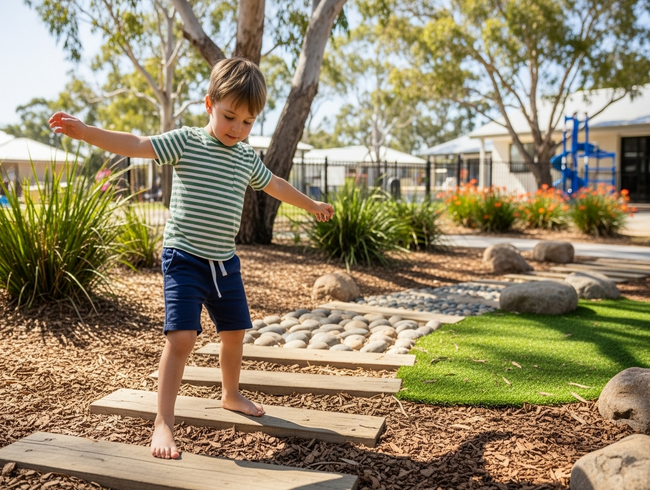
This process is known as sensory integration, and it is the brain’s ability to act as a masterful air traffic controller, taking in all the sensory signals, organising them, and directing an appropriate response. This is a cornerstone of the Early Years Learning Framework (EYLF), which recognises that children’s learning is dynamic, complex, and holistic.
Beyond the Big Five: Uncovering the Eight Sensory Systems
Most of us learned about the five senses in school. However, a modern, evidence-based understanding of child development, as guided by the National Quality Standard (NQS), acknowledges at least eight sensory systems. Understanding these “hidden” senses is crucial for seeing the full picture of your child’s development.
- Tactile (Touch): The sense of pressure, texture, temperature, and vibration.
- Visual (Sight): Interpreting light, colour, shape, and movement.
- Auditory (Hearing): Processing sounds, from a whisper to a siren.
- Olfactory (Smell): Distinguishing scents, which are powerfully linked to memory.
- Gustatory (Taste): Differentiating between sweet, sour, salty, bitter, and umami.
And the three senses that provide the guidance other centres won’t:
- Vestibular (Balance & Movement): Located in the inner ear, this system governs our sense of balance, spatial orientation, and movement. Spinning, swinging, and rolling all stimulate this system, helping a child feel secure and coordinated in their body.
- Proprioceptive (Body Awareness): Receptors in our muscles and joints tell us where our body parts are without having to look. Pushing a heavy wheelbarrow, carrying blocks, or squishing dense playdough provides the input this system needs to build body control and motor planning.
- Interoceptive (Internal State): This is the sense of our internal body signals—hunger, thirst, needing the toilet, feeling hot or cold, or a racing heart when excited or anxious. A well-developed interoceptive sense is the foundation of self-regulation.
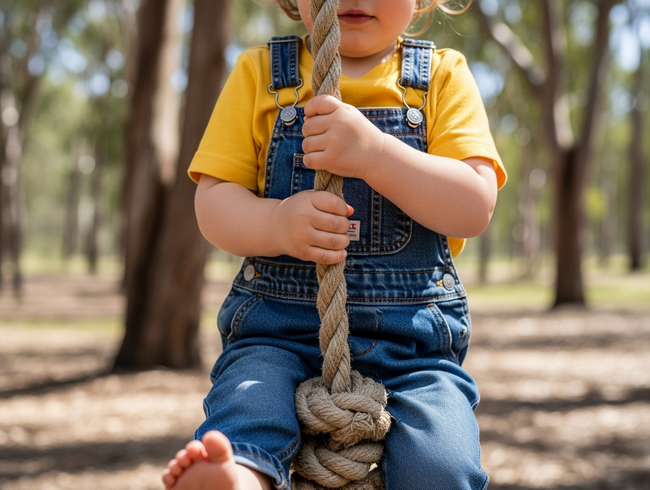
When we create opportunities for sensory play, we aren’t just keeping children busy; we are methodically nourishing all eight of these crucial information-gathering systems.
The Five Pillars of School Readiness Built by Sensory Play
So, how does this neurological weaving translate into the skills your child needs for Prep and beyond? It supports five key pillars of development.
- Cognitive Development & Problem-Solving: A tray of water with various objects isn’t just water play. It’s a physics lab. A child is exploring concepts like displacement, density, and gravity. They are forming hypotheses (“Will this leaf float?”), testing them, and drawing conclusions—the very essence of scientific thinking.
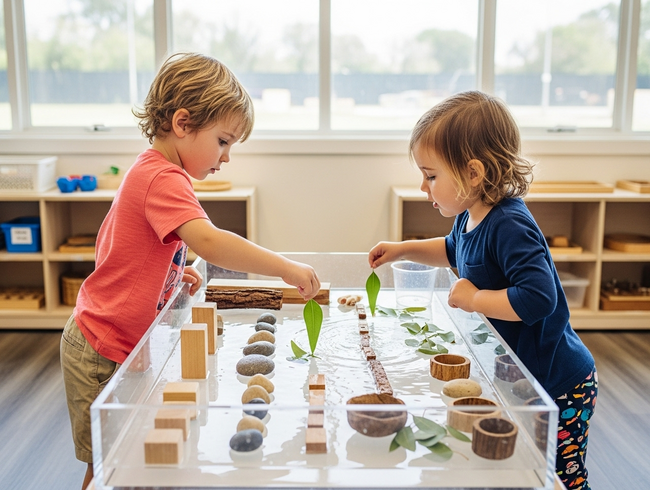
- Language and Communication: Sensory bins are rich language incubators. As children pour, scoop, and sift, they are surrounded by descriptive words: gritty, smooth, cold, heavy, full, empty. This vocabulary doesn’t come from flashcards; it comes from tangible, lived experience, building a deeper and more meaningful understanding of language.
- Fine and Gross Motor Skills: The precise pincer grasp needed to pick up a single grain of rice from a sensory tray directly builds the muscle control required to hold a pencil correctly. The core strength and coordination gained from climbing and navigating varied outdoor surfaces prepare a child to sit attentively at a desk.
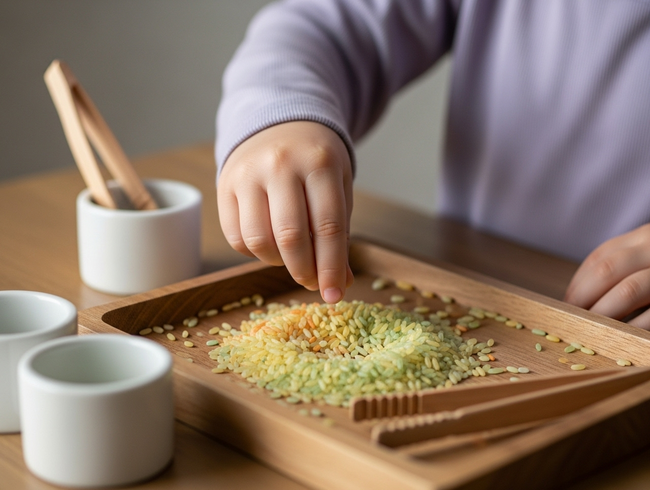
- Emotional Regulation: Sensory play is a powerful tool for self-regulation. For an overstimulated or anxious child, the rhythmic, repetitive action of pouring sand or kneading dough can be incredibly calming and centring. For a lethargic child, jumping on a trampoline can provide the sensory input needed to feel alert and ready to learn. This aligns with the EYLF’s focus on children developing a strong sense of wellbeing.
- Social Skills and Collaboration: When several children gather around a shared water table or a large trough of mud, they are navigating complex social dynamics. They learn to share tools, take turns, negotiate space, and collaborate on a shared goal (“Let’s build a river!”).
Practical Guidance: Supporting Your Child’s Unique Sensory Profile
Every child processes sensory information differently. As expert educators, we observe two common profiles: the sensory seeker and the sensory avoider. Empowering yourself with this knowledge can transform your understanding of your child’s behaviour.
The Sensory Seeker: This child seems to have a relentless need for more input. They are the climbers, the spinners, the crashers, and the ones who touch everything. They aren’t “misbehaving”; their nervous system is craving intense input to feel organised.
- What they need: Safe, acceptable ways to get strong sensory input. Think heavy work (carrying buckets of water), deep pressure (big, firm hugs or rolling up in a blanket like a burrito), and lots of movement (swinging, jumping, running).
The Sensory Avoider (or Sensitive Child): This child can feel easily overwhelmed by sensory input. They might dislike loud noises, messy hands, certain food textures, or tags on their clothing. Their nervous system is highly sensitive and can go into “overload” quickly.
- What they need: A sense of control and predictability. Introduce new sensory experiences slowly and without pressure. Provide tools like spoons or brushes for messy play so they don’t have to touch it directly at first. Offer quiet spaces and respect their need to observe from a distance before joining in.
It’s important to remember that most children are a mix of both, seeking some sensations while avoiding others. The goal is never to force a child into an uncomfortable situation, but to gently expand their tolerance and provide them with the sensory diet their unique nervous system needs.
Okinja’s Philosophy in Action: The Environment as the Third Teacher
A deep understanding of sensory development is woven into the very fabric of our centre’s philosophy and physical design. In accordance with ACECQA’s National Quality Standard, particularly Quality Area 3: Physical Environment, we believe the environment itself is a powerful “third teacher.” Our commitment isn’t just to offer sensory activities, but to create a rich, responsive world where sensory learning is constant and authentic.
Our four separate, purpose-built playgrounds allow us to create differentiated sensory experiences tailored to different age groups and developmental needs, ensuring that from our youngest infants to our kindergarteners, every child has access to the right level of sensory challenge and discovery. This is how we live our philosophy of “Belonging, Being, and Becoming”—by creating a space where every child’s developmental journey is honoured and supported through child-led, play-based exploration.
When to Seek Further Guidance
While a wide range of sensory preferences is perfectly normal, some children may experience challenges that significantly impact their daily life. If you notice your child consistently exhibiting extreme reactions—such as extreme distress over everyday sounds, an unusually high pain threshold, constant and intense seeking of movement that interferes with safety, or severe limitations in diet due to texture aversion—it can be helpful to discuss these observations.
The first step is always a conversation with your child’s educators. As part of our commitment to working in partnership with families, we can share our observations and work with you. In some cases, a consultation with a paediatric Occupational Therapist who specialises in sensory processing can provide further clarity and support.
The Foundation for a Lifetime of Learning
Sensory play is the essential work of early childhood. It is the brain’s primary method for building the robust, flexible, and integrated neurological framework necessary for all future learning. It is the foundation upon which children build their ability to solve problems, communicate ideas, regulate emotions, and connect with their peers.

When you choose a centre that deeply understands and prioritises a rich sensory environment, you are not just choosing a place for your child to play. You are choosing a developmental partner who respects the profound science of childhood and is dedicated to preparing your child not just for their first day of school, but for a lifetime of confident, curious learning.
We invite you to see this philosophy in action. To book a tour of Okinja Early Learning Centre & Kindergarten, perfectly situated for families in Buderim, Mountain Creek and across the Sunshine Coast, is to see how a nurturing, play-based, and sensory-rich environment creates the ideal foundation for your child to soar. Contact us today on 07 5479 2222 to arrange your visit and witness how our expert educators intentionally design experiences that turn your child’s natural curiosity into a foundation for lifelong learning.

